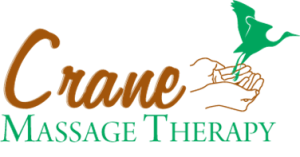Ever feel like you have a knot in your back, neck or shoulder that causes pain elsewhere but is tender to the touch? This concept was first theorized by Dr. Janet Travell in 1942 in her revolutionary work on trigger point therapy.
Also known as myofascial trigger points, these nodules in muscle fiber that believed to radiate pain elsewhere in the body. They can be found all over the body, from the neck to the glutes to the feet.
Research has found that myofascial trigger points are electrically active, and many correspond to traditional acupuncture points. About 620 common trigger points have been mapped to date, and they are classified as potential; active or latent (also known as “Yipe” points for the vocal response given when one is palpitated); key or satellite; and primary or secondary.
They are thought to be caused by muscle overload, activation by other key or primary trigger points, disease, regular inflammation, trauma, or other health issues.
Massage and other techniques can be used to “deactivate” the points. Massage practitioners are able to treat the pain from its actual source, rather than where the pain is felt. Deep stroking massage typically is the most effective way to deactivate trigger points, and is less irritating than simply pressing and holding down the trigger point area. Rather than a wrung towel, think of a squeegee effect. Massage recipients should try to tolerate and request a “good hurt” level for maximum effectiveness.
People experiencing this phenomenon are sometimes classified as having myofascial pain syndrome, which can be differentiated from fibromyalgia in that the latter produces overall pain and tenderness, not specific trigger points.
Travell theorized that trigger points are related to specific points in the skeletal muscle or fascia, but which are not caused by sudden damage to the area or other expected causes like infection or inflammation. The trigger point typically can be perceived as a band- or knot-like feeling in the muscle; stimulation of it can produce a twitch response. When one works on the trigger point, the pain can be reproduced in the location of original complaint, she posited; the pain usually can’t be otherwise explained or treated, except by false diagnoses such as arthritis or carpal tunnel syndrome.
Although the theory has not been universally accepted, studies have found that multiple examiners or practitioners are each independently able to identify the same location and type of trigger point, giving credence to the theory.
Do you have knots that may be trigger points? I can help!
